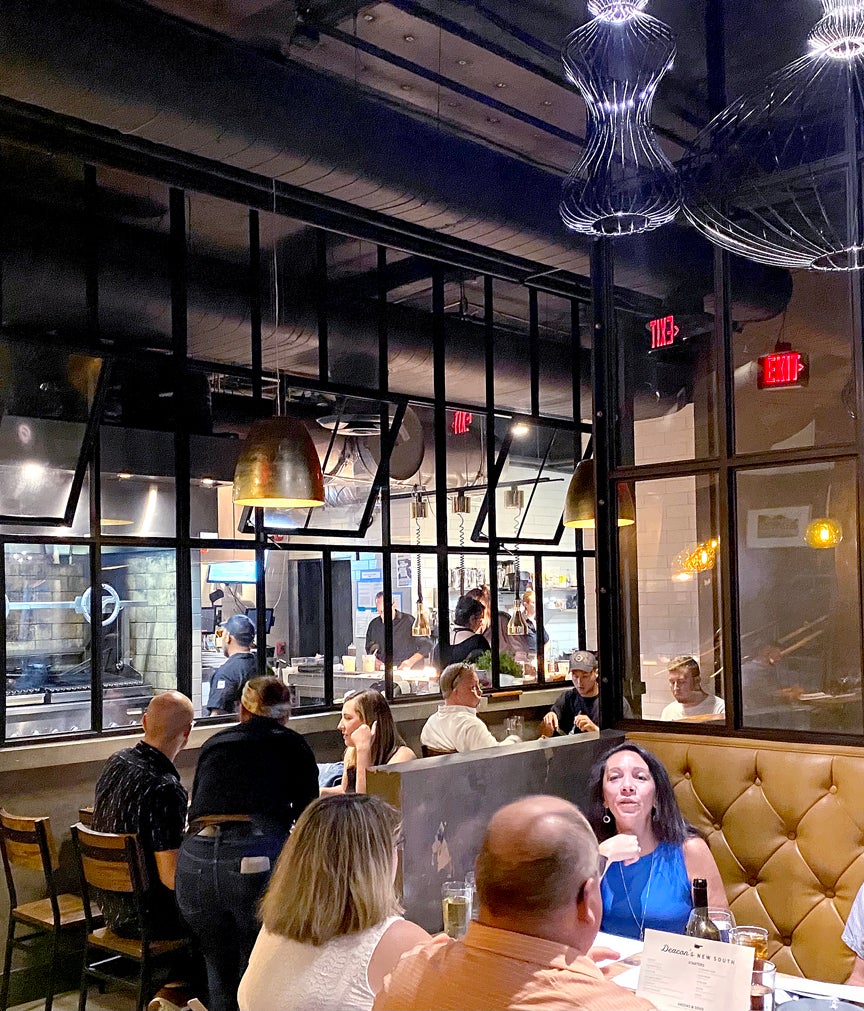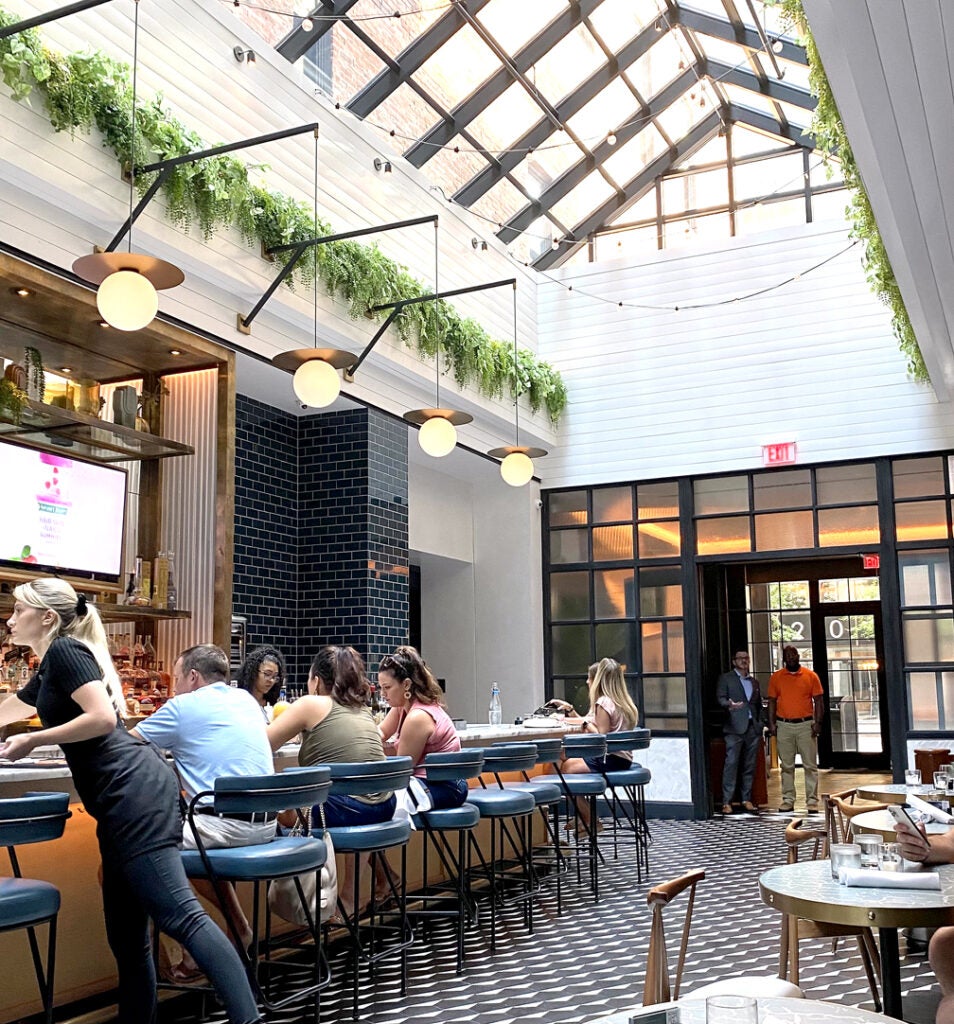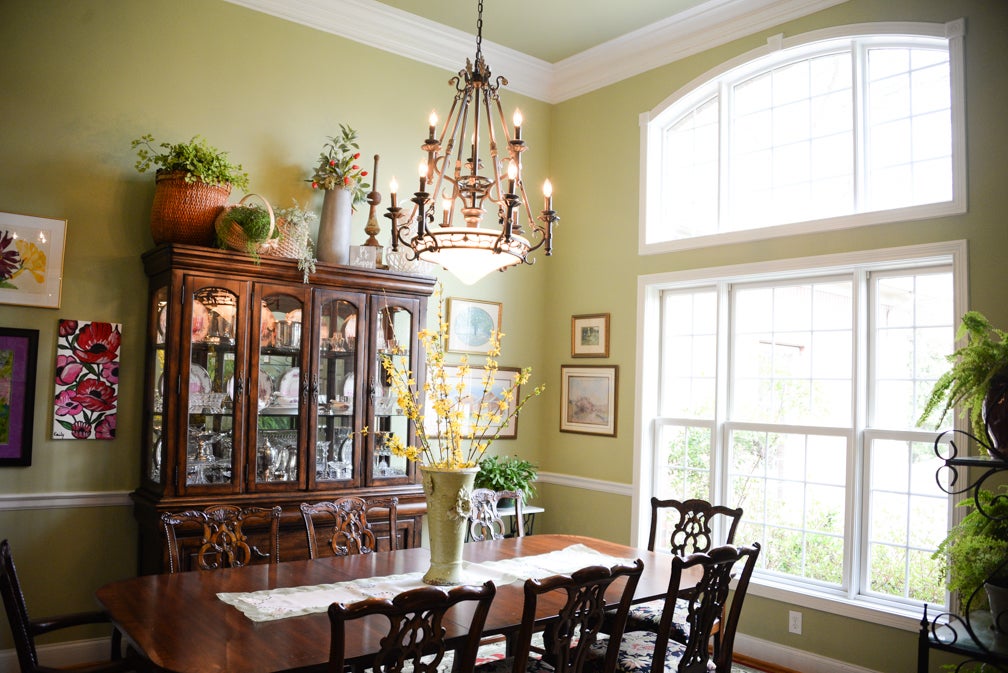Working designers seek inspiration everywhere. A good designer never stops roving. The inspiration can come from travel, shelter magazines (re: the snooping on peers), trade markets or a simple dinner out of town. A restaurant I recently visited provided a delicious dinner and an enjoyable ambiance that added to the experience. Through artistic lighting, unique furnishings and a mix of textures in selected décor, the mood was set. It’s the mood that makes the dining experience in a tastefully designed space something you want to experience.
Commercial design is the design that sets the tone for a busy office, a cheery medical office, the cozy hotel or a bustling restaurant, and it translates easily into residential design. Look up, look around and look through. The design of commercial spaces deliberately tells the story that makes the experience unique wherever you are. Take note of unexpected lighting and the eclectic mix of furnishings. Observe crowd pleasing layouts and how people move in the space. Take in the combination of materials used in a stylish bathroom. To create a pleasing story for your home, look around at your next dinner out or the way a modern office setting makes you feel. Translate your observations into inspiration.
- Mood. A mood can be casual, rustic, romantic or lively. While you may not want the all-encompassing mood of a commercial space translated into your living space, try experimenting with just a few elements. A barbecue joint may have wood paneled walls overlaid by wooden beams to set a rustic tone. By using one element — the wooden beams — a similar rustic mood can be attained in a residential setting.
- Layout. Is the experience of dining in a restaurant with an open kitchen appealing? Do you enjoy seeing the actions of the chef and bustling workers? In considering the layout of your home, do you (as the home chef) want to create the same experience for your family and guests? If so, consider mimicking the open restaurant concept. It melds the functions of cooking, dining and entertaining into an enjoyable personal experience.
- Light. Look up and around at the lighting in commercial spaces. Most of these spaces are designed by architects or designers who know to implement the rule of lighting that incorporates three different sources of light — direct, indirect and decorative — into a single area. Because commercial areas are generally designed around large volumes of space, design professionals get creative with “wow” factors in scale and style of fixtures. The proper selection of light fixtures is imperative in creating the overall aesthetic. Use this lesson to add interest to the lighting of your home.
- Material. Commercial spaces rarely use one type of material or finish. You’ll likely find furnishings with a mix of wood, textiles or leather. There may be the sparkle of glass, handsome metal and creative uses of stone or tile. All these elements are coordinated to present a theme or aesthetic. Try pulling some of these materials into your home. What about stainless countertops like you would find in a commercial kitchen. Instead of a traditional fabric upholstery in the living room, perhaps there is a solid wood chair or a leather bench. Even in the bathroom, wood — like teak — warms the feel of a cold tiled area.
- Outside-In. Humans love nature. Picture a restaurant where skylights or transom windows allow daylight (or twilight) to add to the ambiance. What about living plant material designed to float above versus standing static in a floor grounded pot, or super scaled indoor trees to bring a natural grounded feel into the space. Many outdoor furnishings work well inside. Create a comfortable natural ambiance by considering outside-in options for your home.












